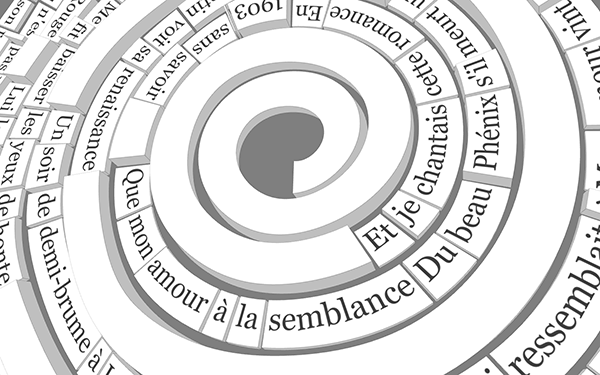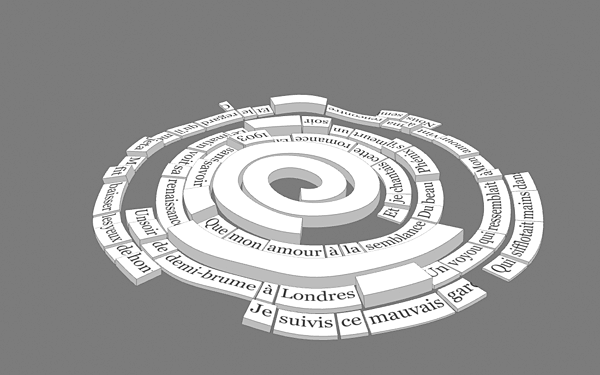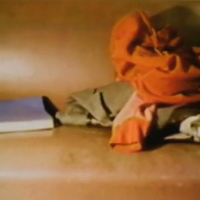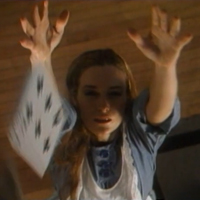This journey began as a regular pilgrimage to ubuweb:sound, Mecca of sound-art and wikileaks of the avant-garde… Ô Salvador, Charlemagne, Kurt et les autres, will I ever find the occasion to show you my devotion?
And then the discovery… A double LP featuring poems of Apollinaire read in 1968 by a trio of French actors, miraculously rescued from oblivion and featuring on disk 1 / side 1, no less than La chanson du mal-aimé read by Denis Manuel, with Erik Satie's Gnossiene No. 1 in the background, performed by Jacques Février.
The mesmerized native French speaker in me immediately began to work on the sequencing of the track: by transforming each of the sound-bits representing words into programmatic objects, it becomes possible to establish a dialogue between the spoken voice and the written text.
A century ago, Guillaume Apollinaire, the ill-loved and copywriter of the new published Alcools, his first book of verse. La chanson du mal-aimé is one of the pearls of the collection, and this work focuses on the first strophes of the poem.
Take a moment to read their English translation by Anne Hyde Greet, and let me quote a passage from the foreword thereof, wherein Warren Ramsey mentions the "bold beginning in a murky London" of the Song of the ill-loved:
«London street urchin, fleeing Israelites, drunken woman reeling from the pub – all these are likened to Annie, as she is identified with l'amour unique and, finally, with the unattainable Absolute. The pursuer is at once Pharaoh, his sister-wife, and his army. So many analogous figures for hunter and quarry, swiftly and freely associated, bring us well along the way toward the "everything always present," the multidimensional time of modern art.»
More than two thousand years earlier, another poem was composed: the song of the Sea, in the Biblical Book of Exodus , celebrating Pharaoh's defeat in the Sea of Reeds. Quoting Wikipedia:
«It is one of only two sections of the Sefer Torah that is written with a different layout to the normal simple columns. The layout is similar to bricks in a wall (see picture in the righthand column): the alternating words are supposed to represent the two walls of the split sea with Israel walking down the middle.»
Metaphorical text-layout? The mere mortal behind chronotext could not possibly ask for more, given the striking analogy with the following strophes in Apollinaire's poem:
Qui sifflotait mains dans les poches
Nous semblions entre les maisons
Onde ouverte de la Mer Rouge
Lui les Hébreux moi Pharaon
Que tombent ces vagues de briques
Si tu ne fus pas bien aimée
Je suis le souverain d’Égypte
Sa sœur-épouse son armée
Si tu n’es pas l’amour unique
Whistling his hands thrust in his pockets
Between the houses
Gaping Red Sea waters
I was Pharaoh he the Hebrews
May those brick waves clatter down
If I did not love you well
I am Egypt's sovereign lord
His sister queen his army
If you are not my only love
The resulting work is a suite of four episodes played in a palindromic loop, each episode consisting of a dynamic surface serving as a medium for the laying of bricks. Bricks are either associated with a word, or empty (corresponding to music or to a pause in the speech respectively.)
The three first episodes are monophonic (one voice), with a camera movement synchronized to the soundtrack, while the last is polyphonic (many voices, differing times), with a static point of view.
At any given moment, the user can change the playing direction by pressing LEFT or RIGHT. Pressing SPACE pauses the soundtrack, while the surface, wherever appropriate, continues to undulate…
acknowledgments
- • Thanks to Hadar and to our daughters Thea and Clio for their patience and support during this journey.
- • Thanks to the High Priests of ubuweb for being an endless source of inspiration.
- • Thanks to Adolfo Roitman, Director of the Shrine of the Book for his insights on the Song of the Sea.
- • Made using the Cinder framework by The Barbarian Group.
- • Audio engine: FMOD Sound System by Firelight Technologies.
download
- • Windows XP, 7, 8, 10 (9.6MB)
Unzip, open the folder and run. - • Mac OSX 10.7+ (10.9MB)
Unzip and run.
requirements
- • Speakers, turned on.
- • A Mac or PC with decent graphics capabilities.
troubleshooting
- • These executables are not properly signed. You will need administator priviledge in order to allow them to run.
- • For the smoothest animation, close any other running program.
- • To uninstall, simply delete all the previously unzipped files.
related works


tribute
American artist Gary Hill has created quite a few pioneering works involving techniques such as speech-sequencing or reverse-playing.






